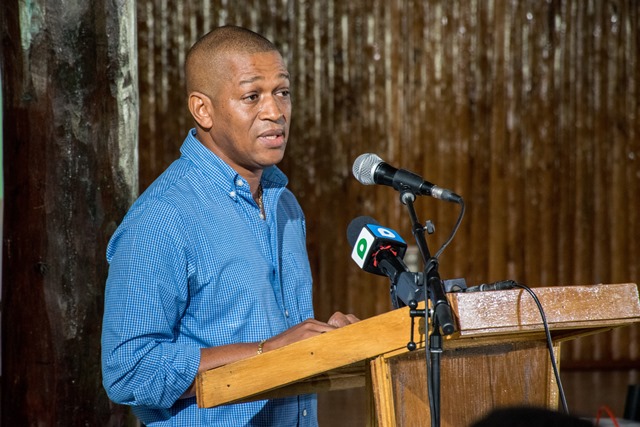Up to the third quarter of 2018, Guyana had benefited from some US$64 million ($13.7 billion) in local content from the oil and gas sector which represents the highest amount since oil was first found here in 2015.
“Guyana has benefitted directly to the tune of over $65 million US from local content in 2018 alone,” Head of the Department of Energy (DoE) Dr Mark Bynoe told an oil and gas youth forum last Saturday. Bynoe explained to this newspaper that the figure reflected numbers up to the third quarter of 2018 as final quarter sums are still to be assessed.
With Guyana expected to begin producing oil by the last quarter of this year, according to some analysts, the DoE Head urged youths to prepare themselves so that they could be direct local content beneficiaries.
Bynoe told those gathered that as Guyanese, they were raised in the era of rice, sugar, bauxite, and gold, and the industry of oil and gas must be conventionalized in a similar way. “We have to begin to see this not only as a new industry but also as a new way of doing business,” he said. In terms of the local economy, Bynoe said that there are continuous engagements with the various operators to ensure that Guyanese have an equal share and first preference in whatever is being done.
As a result, he urged youths to chase after their dreams and not money. “Because that’s what will take you forward,” Bynoe said, while noting “as young people, you will see that things are not only about to happen, things are already happening.”
He said what needs to be understood is that the standards in the oil and gas sector are astronomically higher than anything Guyana has ever been exposed to and this is why it is imperative that locals be au fait with global standards and demands.
The DoE head explained that those who are desirous of being considered for employment or services, must first register with the Centre for Local Business Development, located along South Road in Georgetown. The centre, he said, offers training that will help equip people to know the dos and don’ts, how they can benefit and how they can better position themselves to take advantage of opportunities moving forward.
Youths were further advised that they do not have to change career paths to benefit. “What you have to do is whatever you are doing, ensure that you are the best at it. You don’t have to become a petroleum engineer to benefit from oil and gas. What you have to do is to ensure that you are a certified Guyanese and you can be employed,” Bynoe said.
Last year, government released a list of 227 suppliers and individuals that ExxonMobil and its main contractors have done business with in 2018 and another 309 for 2017.
The listing did not detail the services provided or indicate whether the transactions represented long term or one-off agreements. Further, it faced criticism over whether it met the understanding of local content as the building of a skilled local workforce and a competitive manufacturing and supplier base, and oil and gas technology transfer.
The list seemed to be focused primarily on service providers and it is still unclear how it will be developed to meet government’s own local content objectives which are geared towards enhancing skills and creating businesses to support the oil and gas sector. There has been an ongoing call for a local strong local content policy.
“Local Content under the Guyanese narrative will be understood as the sum of inputs of local goods and services including employment across the oil and gas value chain. The primary aim and objective of the policy is ensuring the education, inclusion, and advancement of as many as possible in the value chain of the oil and gas industry. In an effort to maximise benefits and retain value from Guyana’s petroleum resources, considerable focus will be given towards Capacity Development, Local Content and Value Addition,” Guyana’s Second Draft Local Content Policy states.










